Blog categories
Blog archive
RSS Blog posts tagged with 'decor'
Blog Filters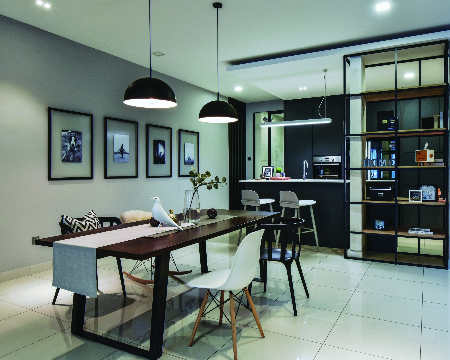
Creating a Well-Composed Dining Room
Friday, November 20, 2020
Whether you have a large formal dining hall or a small area for daily mealtimes next to the living room, here’s how to put together different interior features to ensure your dining room looks and feels good from every angle.
 Interior design by: The Roof Studio
Interior design by: The Roof Studio
Whether you’re hosting a family dinner or just getting together for a weeknight meal, the dining room is where people come together. From modern to classic, there are many ways to turn this room into a cosy space that is perfect for entertaining your guest in comfort and style. Gone are the days when you need to have matching tables and chairs at your dining table. The trend is to go for features that complement each other. If you are going for a modern look, aim for furniture that has clean lines and sturdy material. Also, make good use of tableware to pull it all together.
Palette Play
It's easier to create a well-designed dining room when you have a strong starting point to guide you - this is where having a colour palette in mind can really help you focus on the elements you can use. If you love a certain colour and have a particular hue in mind for your dining room, start with this colour.
 Interior design by: The Roof Studio
Interior design by: The Roof Studio
For example, yellows are a great way to create a bright and vibrant dining space. Start with light yellow for the walls, then add on bolder shades of complementary tones like blues. However if you are not confident about using bold colours, go for a neutral and monochrome palette, like the dining room pictured here.
Accent Pieces
Don't just stop at tables and chairs in the dining room. If you have space, accent furniture like a console or an armoire can work wonders to help create a focal point and enhance those blank walls that envelope your dining area. However, choose something that blends with your dining table.
 Interior design by: Chaplins Furniture
Interior design by: Chaplins Furniture
In this dining room, a bright blue console works beautifully to bring attention to the table. The decorative accessories and mirror above the console add a lively look to the atmosphere. The bold pendant lamps are also just the perfect features to balance off the the space.
Material Maneuver
 Interior design by: Mode Interior Style
Interior design by: Mode Interior Style
Mixing and matching different materials in the dining room can offer a dramatic yet personalised effect to your space. Balance is key, as you don't want a single material to overwhelm the rest. Also offset hard and sturdy surfaces with soft furnishing to give your space a sense of cosy warmth.
 Interior design by: Mode Interior Style
Interior design by: Mode Interior Style
In this dining room, there is a bold variety of materials ranging from solid wood and faux grass to brick-like finishes on the opposite wall. The addition of the marble-like feature wall balances off the dark-coloured surfaces. The use of wood flooring just around the dining space also helps to demarcate the space clearly.
Vibrant Variety
Another way to mix materials is through a variety of different seating and surfaces. Mix-and-match seating works well when each chair or bench is of a similar style and shape. Also think about what you use as centrepieces on your dining table.
 Wood and ratan are making a huge comeback in the dining room, but those from the lighter range are preferred. Go for a Zen effect but break from the monotony with stronger tones and textures. Interior design by: iDecorate
Wood and ratan are making a huge comeback in the dining room, but those from the lighter range are preferred. Go for a Zen effect but break from the monotony with stronger tones and textures. Interior design by: iDecorate
In this warm and neutral dining room, the woven rattan chairs bring a sense of similarity to the entire set, but if you look closely, every single piece is individual in style. To further enhance the room, a tableware set with a similar look and feel is used.
Trendy Tableware
 Interior design by: iDecorate
Interior design by: iDecorate
Finally, complete your dining room with beautiful tableware to bring everything together. When it comes to choosing a dinnerware set, the choice is usually a matter of personal taste. It’s a necessity for any table, but it also sets the mood for a meal. For example, formal china can make a momentous occasion feel even more special, while basic stoneware is a good match for a low-fuss weeknight dinner.
 Colour coordinate your tableware by having a neutral backdrop and then enhancing it with bolder tones through colourful plates, bowls, and mug. Interior design by: Dunelm
Colour coordinate your tableware by having a neutral backdrop and then enhancing it with bolder tones through colourful plates, bowls, and mug. Interior design by: Dunelm
In the example here, a white dinner set complemented by green accents bring out a nature-inspired theme that enhances the wood dining table. To add texture, fabric placemats tone down the hard surfaces and introduce a lush quality to the space.
 Interior design by: Dunelm
Interior design by: Dunelm
Article by: Lily Wong
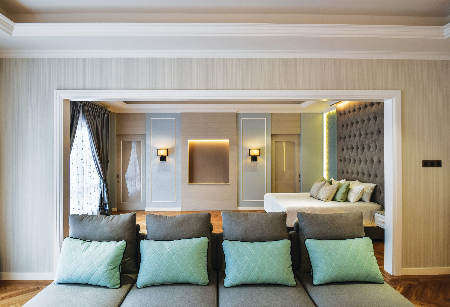
Home Styles: Modern Classic
Friday, November 20, 2020
Antithetical yet complementary: modern classic style is a delicate balance struck between timeless features of tradition and the uncomplicated lines of modern design.

Rare materials transported across great distances, and decorated with finely handcrafted details at incalculable cost – these were the standards of luxury during the immeasurable periods of time that preceded modern mass manufacturing. But as new republics arose from the ashes of old empires, the arrival of the steam engine brought a paradigm shift that led to a global redistribution of wealth and authority – and consequently changed what was considered attractive.
 Tip: Shelves and displays composed from the straight lines of modern design represent an appropriately unobtrusive backdrop for objects of classical antiquity – especially when lit from within hidden recesses. The resulting thematic and visual contrasts of these arrangements make for striking presentations on multiple levels.
Tip: Shelves and displays composed from the straight lines of modern design represent an appropriately unobtrusive backdrop for objects of classical antiquity – especially when lit from within hidden recesses. The resulting thematic and visual contrasts of these arrangements make for striking presentations on multiple levels.
On the rising wave of machine-aided manufacturing, designs for everything from clothing to transportation began to sway towards dependable simplicity and reproducibility, while shying away from the ornate and opulent. Modernism eventually gave rise to minimalism, which sought to strip everything down to its most practical and functional form, but some characteristics of classical luxury endured to the present day – romanticised and emulated either in desperation for emotional expression or admiration for classical antiquity.
This is the very definition of the modern classic decorative style – a union of traditional and modern sensibilities expressed in the choice of furniture and materials to achieve a décor that is simultaneously elegant, timeless, and comforting. Hue Interiors illustrates the definition of modern classic style with the pictured home, which combines modern characteristics – such as a reliance on straight lines and a neutral colour palette consisting largely of grey, white, cream, and beige – with traditional details such as the capitonné upholstered headboard for the bed, wainscoting to vertical surfaces, Damask wall-coverings, and a herringbone pattern in wood on the floor.

While the classically inspired components of the pictured décor are intentionally obvious, the modern sensibilities expressed here are less so. Aside from the neutral palette, other more subtle characteristics of modern style are expressed in the manner of composition – namely: the application of symmetry, visual balance, and a stringent emphasis on using clean lines to serve as a backdrop for the array of classical details.

As Hue Interior demonstrates, the composition of the bedroom in symmetry, the use of neutral shades, in addition to both classical and modern elements presented in harmonious balance help to render the bedroom comforting and unobtrusive – making an ideal backdrop for intricate details drawn from traditional influence. The reliance on straight lines, as portrayed by the bedroom’s fixtures and fittings, provides the very minimum of distinction between objects without detracting from the visual splendour of the classical details.
 Tip: Perhaps due to the paradoxical differences between modernity and classicism, the blending of characteristics from these two decorative styles creates an atmosphere that is at once mystifying and comforting.
Tip: Perhaps due to the paradoxical differences between modernity and classicism, the blending of characteristics from these two decorative styles creates an atmosphere that is at once mystifying and comforting.
In addition to the lush textures and fine details occupying the walls – which already imply a more prosperous and upwardly mobile ambiance on their own – the positioning of ornate furniture, paintings, or sculptures, under the flattering glow of a feature light create additional elements of luxurious elegance against a clean and uncluttered background of straight lines and neutral shades.
 Tip: As demonstrated in the pictured home, there is no ideal proportion of modernity to classicism set in stone – as the decorative palette can be inverted for contrast between spaces.
Tip: As demonstrated in the pictured home, there is no ideal proportion of modernity to classicism set in stone – as the decorative palette can be inverted for contrast between spaces.

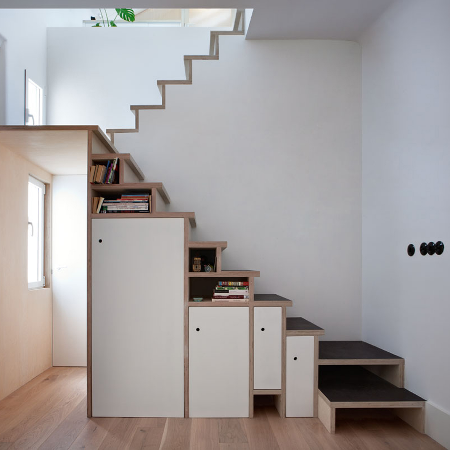
Step Storage: 7 Creative Under-Stairs Storage
Friday, November 20, 2020
The empty space under the stairs sometimes gets a bad rap on account of the many stories depicted in film that paint this potential storage space as a nest of insidious horror - or at the very least, a place of relative obscurity where things go to be forgotten. But in this modern age of urban living - where gratuitous space typically comes at a premium, we felt it be prudent to look at these spaces under the stairs in a new light, in order to discover novel ways of incorporating storage options.
Climbing Cabinetry
 Image Credit: Buj+Colón Arquitectos
Image Credit: Buj+Colón Arquitectos
In a compact space where a full-fledged staircase would have been overwhelmingly large, a lightweight stairway is formed out of progressively taller cabinets and bookshelves, with an intermediate split-level landing simplistically projecting from the top of the cabinetry. The result is deliberately left without a railing to achieve an unobtrusive stairway that is ingeniously disguised as storage.
Footwear Hideaway
 Image Credit: Post Architecture
Image Credit: Post Architecture
The act of removing one’s shoes when entering a home has transitioned from being a distinctly Asiatic custom of tradition to a practical measure in many urban homes around the world - which necessitates considerable storage fixtures to be incorporated at the entryway. The pictured shoe drawers, designed by Toronto-based Post Architecture, enable a sizable family’s worth of shoes to be neatly stowed away in the unassuming space beneath the stairs.
Stairway Stack
 Image Credit: Schemaa Architects
Image Credit: Schemaa Architects
While a stairway with a steep incline may present a formidable barrier to the upper floors, the complete use of extra space for cabinetry helps to disguise the risers and treads of the pictured loft-style staircase. To soften the gradient of the stairway, Schemaa (a Parisian architecture firm) incorporates intermediate blocks of wood to break up the high risers of the steps - resulting in a more graceful incline.
Aperitif Alcove
 Image Credit: DIY Network
Image Credit: DIY Network
An alternative to wholly dedicating the space under the stairs to storage is put forward by the DIY Network’s Watson Hawkins. The idea entails moving beyond pure storage and adding a facet of functionality to the space. In the pictured example, nearby countertops are extended to the space beneath the stairs, with cabinetry truncated at an angle to match the slope of the stairway’s carriage.
Sequestered Office
 Image Credit: Translina
Image Credit: Translina
For the majority of those who often find themselves working at a desk while at home, the extra headroom often goes to waste during those hours seated at a desk. Rather than dedicating an entire room to a home office and letting that overhead volume go unused, the pictured staircase incorporates a diminutive office space - where the lower clearance serves to neatly encapsulate the work corner.
Foyer Fixtures
 Image Credit: Minimalist Desk
Image Credit: Minimalist Desk
Walking out of the front door is a ritual that often gets repeated whenever a necessary object gets left behind - with the procedure often followed by dashes up and down the stairs to retrieve some forgotten item. The entryway often gets cluttered with catch-all containers and furniture as a result. The pictured stairway holds an ordered array of wicker baskets in niches beneath the carriage to negate the clutter and hide vital containers from sight.
Hidden Habitat
 Image Credit: Basement Remodeling
Image Credit: Basement Remodeling
Spaces deemed too small for a human to utilise can be handed over to our smaller companions instead. With their uniquely low-lying perspectives, even the smallest of burrows can shelter whole landscapes that are worlds apart from their larger environment. The pictured stairway accommodates a desk just wide enough to be used (by a human) for writing letters - with the extra headroom dedicated to wine storage, while the extra space to the side goes to one lucky quadruped.
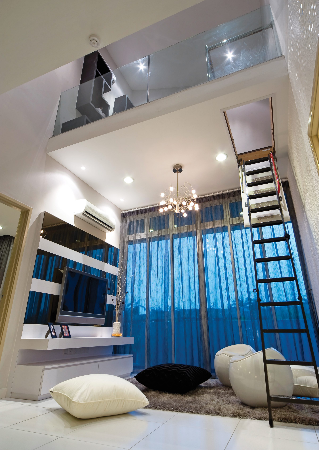
Choosing the Right Decorative Style for You
Friday, November 20, 2020
We've looked at kitchen countertop materials to describe various materials and how they may be suited to different personalities – but until now, we have not attempted to apply that same perspective to decorative styles. While decorative styles are probably as varied as people, we have been seeing some similar personalities gravitating towards particular aesthetic styles – which we will attempt to describe here for the benefit of anyone who might be in the midst of finding themselves and their preferred decorative style.
There are innumerable methods for analysing personality, but perhaps the most stringently tested theoretical framework would be that of the Big Five personality traits (openness, conscientiousness, extraversion, agreeableness, and neuroticism) – which will be the theory we adopt here in order to generally associate a particular decorative style with a dominant personality trait.
Openness
One of the first Big Five personality traits to be discussed is usually an individual's "openness to experience" – which roughly translates to a person's imagination and bravery to venture into uncharted waters. A person who is considered high in "openness" is regarded as being receptive to variety – easily gravitating towards learning, art, or other creative pursuits; while a person low in "openness" will display a preference for routine and representational works of art such as classical sculptures rather than abstract or interpretive designs.
 It takes a certain kind of bravery to seek out and incorporate unconventional features — such as the pictured loft space, made accessible with the addition of an industrial attic (loft) ladder. Interior design by: Nice-Style Refurbishment
It takes a certain kind of bravery to seek out and incorporate unconventional features — such as the pictured loft space, made accessible with the addition of an industrial attic (loft) ladder. Interior design by: Nice-Style Refurbishment
Historically accurate decorative styles such as faithful classicism may not be ideal for highly open individuals, who tend to prefer more varied, esoteric, or eccentric blends of styles to reflect their unique tastes. An open person would seek to forge a unique décor wherever possible – perhaps even going as far as rearranging entire floor plans to achieve something different. On the flipside, a less open person may gravitate toward styles that are more commonly represented in today's homes – or even a style representing something from childhood – while adhering to the convention of the day as much as possible.
Conscientiousness
Describing how people react to expectations of society at large, a person high in conscientiousness is more likely to consider rules both written and unspoken – such as is required when attempting to pay tribute to classical aesthetics. A highly conscientious person considers the experience of guests and visitors more than their own comfort, and will likely seek out a familiar décor – such as a variation of modern contemporary or classical modern style – to achieve a comforting ambience for the benefit of others while aiming for the hallmarks of luxury.
 A conscientious homeowner seeks to enforce implicit aesthetic rules rather than break them. Designer: Design Integra
A conscientious homeowner seeks to enforce implicit aesthetic rules rather than break them. Designer: Design Integra
A less conscientious individual may be seen as unpredictable and impulsive – and the right decorative style in this case is more a matter of personal preference than anything else. A person low in conscientiousness will likely gravitate towards a unique décor to represent their singular personalities, rather than adhering to convention for the satisfaction of guests.
Extraversion
The dichotomy of extraversion and introversion is perhaps the most popular of facets in personality research – a person is considered extroverted when they display an innate attraction for social activity, while an introvert is one who values alone-time over a stint of hanging out.
 The home of an extravert will more than likely present bold shades favoured by exuberant personalities. Interior design by: Surface R
The home of an extravert will more than likely present bold shades favoured by exuberant personalities. Interior design by: Surface R
Extroverts plan their home around social events, considering factors like the placement of extra seating and opting for bold colours rather than relying on a neutral palette. Introverts, on the other hand, will prefer to design for personal comfort and use softer colours in the creation of solitary spaces such as the study or the bedroom.
Agreeableness
A person is considered agreeable when they display a high sensitivity for the feelings of others – and their decorative choices might closer reflect the norms of modern styling, while less agreeable individuals may be seen as being more concerned with their own avenues of self-expression.
 Individuals high in agreeableness will tend to prioritise the familiarity of the neutral palette and twentieth-century designs over self-expression. Interior design by: Alpex Design
Individuals high in agreeableness will tend to prioritise the familiarity of the neutral palette and twentieth-century designs over self-expression. Interior design by: Alpex Design
The most intriguing and awe-inspiring decorative styles are to be found in the homes of less agreeable individuals – while one can expect something more contemporary, less esoteric, and with greater mass-appeal in the home of an agreeable person.
Neuroticism
As a measure of emotional stability and how well a person copes with stress, the trait of neuroticism is not as well associated with any particular decorative style as any of the four previously described personality traits – but some conclusions can still be drawn. For instance, a highly neurotic person with a stressful career may have no use or appreciation for a study — the mere sight of a workstation may elicit feelings of frustration in the home.
 A carefree personality, low in neuroticism, lets stress roll right off and wouldn't be the least bit disturbed by clutter or asymmetry. Interior design by: Pins Studio
A carefree personality, low in neuroticism, lets stress roll right off and wouldn't be the least bit disturbed by clutter or asymmetry. Interior design by: Pins Studio
Neuroticism also informs how one deals with clutter in the home, a person who is more inclined to keep spaces clean, and is also less willing to cope with the stress of a mess, will likely be on the lookout for storage options – while the messier and less neurotic among us may not have even considered cleaning up at all.

The Parenting Personality Palette
Friday, November 20, 2020
Nippon Paint Malaysia uncovers some of the key parenting personality traits based on your most frequented colour!
Did you know that your favourite colour reveals your dominant parenting style? Certain studies on the psychology of colour that have been carried out indicate that your preferred colour closely reflects some of your most dominant personality traits and strongest characteristics; even down to the various ways in which you behave towards your child (or children!). Take for instance, parents who prefer the blue hues are often regarded as more dependable and calm figures whilst those who gravitate towards brighter shades are known to be more assertive parents with a stronger personality. If you have more than ONE favourite colour, you may not have all the traits from one particular colour, but instead your parenting style comprises of a mixture of the various characteristics. Let’s say if you’re fond of hues such as pink and yellow, you may have a sensitive personality with enthusiastic vibes.


Read on below to find out if your favourite shade closely reflects your parenting traits.
The Parenting Personality Palette
It’s time to reflect upon your true colours and see if your favourite colour resonates closely with your respective parenting traits.
Nippon Paint Malaysia offers a wide range of colours that matches your parenting personality to the tee, ranging from dark to the lighter spectrum of hues, from warmer to cooler colour shades. There’s mocha brown, khaki green, rose-pink… and the list goes on!
How about taking inspiration to the next level and reflecting your parenting personality colour(s) on the walls of your home?
Here are some colours from Nippon Paint to consider for your next redecorating project at home featuring your parenting personality colour complemented with other suitable shades:
The Calm & Collected (Blue)
The colour blue is recognised as the most calming shade of the colour spectrum, which makes it one of the top choices of favourite colours around the world. If you find yourself not overreacting to your children most of the time, the colour blue reflects your calm persona best.

To create overall soothing vibes all around your home, select colours such as light green, or a light peach to fully complement your blue themed walls. If you’re a true-blue fan, you could even opt for pairing the palest blue with navy without overwhelming your entire room.
The Enthusiastic Ones (Red)
Red is known to be a strong colour that resonates well amongst those that carry a more dominating trait. Parents who favour the colour red are typically strong-willed – and much like the colour, they do not easily give in to a child’s requests.

However, in a home, everything in the colour red may be too overwhelming… so why not try balance red with softer shades such as light grey or neutral beige tones for a greater contrast?
The Nurturing Couple (Pink)
Those who like the colour pink often convey a reassuring ear to their children and see things in a positive light in most situations. While light pink is gentler on the eyes; some are a fan of brighter pinks such as fuchsia which also look great on walls if paired with clean colours such as beige or the lightest shade of yellow.

If you’re a fan of lighter shades of pink, try complementing this with light pink tones for a classy look or opt for striking blue for fun vibes.
The Fair Minded (Green)
A colour that reflects the personality of a calm yet logical and analytical figure who often takes a more supportive and nurturing approach at most instances. If you find yourself reasoning with your child or children over their actions, green is the colour for you. Being a neutral shade, green can be paired with almost any shade on the colour wheel, depending on the desired ambience for your room.

To fully resonate with your calm personality, go along the lines of a pastel pink with a soft peach shade. Otherwise, for those who prefer strong green undertones, match your green feature wall with a light oak brown shade for a down-to-earth vibe.
The Cool Ones (Yellow)
Yellow represents the colour of enthusiastic parents who are often easily excitable over most things, their children included. When you think yellow, the first word that comes to mind is ‘bright’! …which makes the colour an easy feat to match with two extremes, either choosing to pair it with a pale colour or opting for colours on the darker end of the spectrum.

For a dark colour, shades such green or grey makes for a good contrast against any yellow-themed feature wall. For an earthier tone, opt for colours such as brown.
Here are some top tips to consider when repainting your home!
- To ensure a safe environment for your child/children, try a child-safe odorless paint from Nippon Paint’s Child Wellness Range (For more information, log on to: www.nipponpaint.com.my/childwellness)
- Opt for colours which are contrasting to your feature wall for a vibrant look
- Measure the space of each room to get an estimated amount of paint required
- Care for the walls of your home by ensuring proper preparation is carried out (i.e priming the walls prior to painting)
- Have a rough idea on your overall colour theme. Fret not if you’re unsure of what colour suits your room best and opt for expert advice from Nippon Paint’s Colour Scheme Professional Services at www.colourscheme.com.my to get the perfect recommended shades for your rooms.
If you’re looking to repaint the walls of your home but are unsure where to begin, visit www.nipponpaint.com.my to spark some inspiration!
Text and images by Nippon Paint
How to Enhance Your Kitchen With a Breakfast Bar
Friday, November 20, 2020
Cooking spaces are an irresistible draw for some people and a kitchen island will make them feel welcome.
As noted by televised interior designer Candice Olson, the modern kitchen is less one person’s domain as it is a space for interactive cooking between family and friends — with the modern conventions of open floor plans and relaxed banquet protocol often leading to an accumulation of dinner guests in the kitchen.
 Interior design by: Pins Studio
Interior design by: Pins Studio
The sight of an island counter in the kitchen presents an inviting atmosphere that simultaneously helps to keep the operative area clear of pedestrians and encourages the curious guest to slide in for a respite or lean against it in casual repose. Knowing that everyone would be gravitating towards the kitchen during gatherings, we thought it prudent to review some of the ways you could add an island counter.
Practical Element
Instead of having the breakfast bar rise from the centre of the layout like a monolith, you could also merge the island with the rest of the kitchen to minimise its intrusion into a compact space. Pins Studio demonstrates a space-saving configuration in the pictured galley, by extending a counter into the centre of the walkway, effectively turning the two-wall layout into a multi-faceted workspace that simultaneously keeps guests away from exposed heat sources while providing a vantage point from which they can safely observe the proceedings and engage in conversations with the chef.
Stylish Seats
 Interior design by: Mode Interior Style
Interior design by: Mode Interior Style
Fashion arbiters are almost uniformly in agreement when it comes to the effect of accessorising—it is often said that the same piece of clothing can be presented in a multitude of different ways when combined with a purposeful selection of decorative accessories.
 Interior design by: Mode Interior Style
Interior design by: Mode Interior Style
As demonstrated in the pictured kitchen, Mode Interior Style differentiates the neutral coloured space with the addition of wire-framed lighting fixtures and bar stools. Although lightweight and unobtrusive in their design, their presentation in the foreground of this space draws the eye away from a simplistic background of rectangles coloured in the shades of the neutral palette.
 Interior design by: Mode Interior Style
Interior design by: Mode Interior Style
Twists and Turns
 Interior design by: Alvinterior Concept
Interior design by: Alvinterior Concept
A kitchen melded with an open floor plan presents an opportunity for creative expression in much the same way as a blank canvas invites an artist’s touch, and an island counter turned into a piece of artistic expression on its own often represents the most defining element of a truly unique kitchen.
 Interior design by: Alvinterior Concept
Interior design by: Alvinterior Concept
Alvinterior Concept sets the pictured cooking space apart from all others by rendering the breakfast bar with novel lines and angles, resulting in a functional sculpture of form and purpose at the edge of the chef ’s domain.
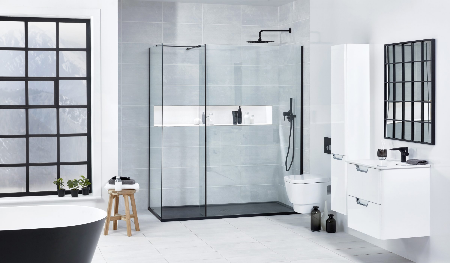
Minimalist Bathrooms’ Must-Have Features
Friday, November 20, 2020
Beyond slim profiles and unobtrusive colours, there are a host of characteristics expected to accompany the ubiquitous minimalist bathroom.
Born out of a reaction to abstract expressionism, minimalism continues to be highly relevant, especially when it comes to imbuing bathrooms with space-saving effects. With the majority of people living in urban centres around the world, and that proportion set to increase with the rising pace of urbanisation, minimalism will likely continue being among the most popular of styles applied in bathrooms.
 Interior design by: Frontline Bathrooms
Interior design by: Frontline Bathrooms
While modern interpretations of minimalism may diverge with experimental blends of other aesthetic styles, a devoutly minimalist bathroom can be as awe-inspiring and breathtaking as a classically decorated banquet hall. To help you achieve the epitome of minimalism in the bathroom, we take you on a tour of some bathrooms that best exemplify this iconic style.
Sleek and Chic
 Interior design by: Frontline Bathrooms
Interior design by: Frontline Bathrooms
Beyond the hallmarks of shedding frills in favour of practicality, another underlying principle of minimalism is centred around the preservation of space. Simplistic fittings such as those incorporated in the glass shower enclosure of the pictured bathroom are the most obvious selections for a minimalist space, but the choice of colour palette for the finishes and fixtures will have additional, more subtle, effects on the overall decor. Bathroom fixtures tend to be all-white, but to truly maximise the perception of volume, the choice of white tiles is made to imbue this bathroom with the space-saving effect of white.
Mod Tub
 Interior design by: Waters Baths of Ashbourne
Interior design by: Waters Baths of Ashbourne
All that effort into preserving a sense of space would just go to waste without a central element for the eye to focus on, and a bathroom decorated in minimalist style just happens to make a fittingly subtle backdrop for a lone decorative element. In the pictured bathroom, the slim furnishings and plain white finishes set the stage for eyes to fall on the main attraction of this space — the freestanding tub. With its all-white shell, the bathtub seemingly blends into the background, but its delectably curved sides set it apart from the rigid forms in the background.
 Interior design by: Waters Baths of Ashbourne
Interior design by: Waters Baths of Ashbourne
Tip: The most popular style of bathtub in the current age – the ubiquitous free-standing tub – is the ideal choice for a central element in modern bathrooms by virtue of their uncomplicated forms.
Small Wonders
The rationale behind those slim profiles prevalent in minimalist spaces is the reduction of form while preserving function — a principle that sometimes leads to the limitation of shelves and countertop surfaces. But a minimalist bathroom does not necessarily entail the forgoing of sometimes necessary amenities, as demonstrated in this pictured bathroom, the deliberate preservation of floor space around the tub enables the addition of a foot stool to host accessories needed for a bath. Even with this minute detail added as an afterthought, the jarring divide between a showroom and someone’s real life sanctuary is effectively crossed.
 Interior design by: Waters Baths of Ashbourne
Interior design by: Waters Baths of Ashbourne
Tip: A sprinkling of accessories and creature comforts speaks of a lived-in space. As demonstrated in the pictured bathroom, even a stool added as an afterthought makes the space seem purposefully minimalist rather than empty.
Read more articles from the August 2018 issue of Creative Home Magazine here.
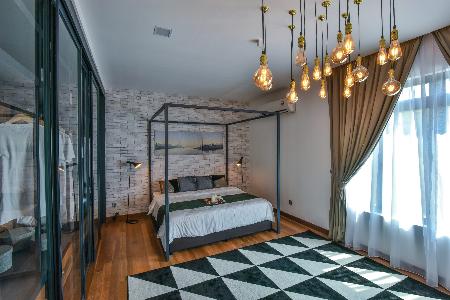
4 Bedroom Styles To Inspire You
Friday, November 20, 2020
Undecided as to whether you find comfort in simplicity, or pine for the ornate antiquities of times past? This summary of common bedroom styles will point you in the right direction.
It takes a highly proficient mind-reader to accurately determine the kind of decorative style that appeals to any individual - and while the most seasoned practitioners of interior design may be able to guess your preferences from a few brief interactions, there is no better judge of one’s own position on the spectrum of order and chaos than the self.
While the less private areas of a home may feature a décor to impress, the bedroom is largely a concern for the occupant - so before settling on your choice of furniture and materials for the bedroom, take a look at this introduction to the most common styles of décor and decide on which speaks to you the most.
Industrial Chic
 Interior design by: Homlux Interior Furnishing
Interior design by: Homlux Interior Furnishing
Some personalities gravitate towards ornate classicism for the grandeur, and others find minimalism appealing for the sake of simplicity – but the aesthetics of industrial style appeals to those who seek a lightweight décor imbued with aged sophistication. As with the pictured bedroom decorated by Homlux Interior Furnishing, a bedroom can be made industrial as a whole – with a strict reliance on materials commonly found in places of work, or a more eclectic décor can be formed with a sprinkling of a few bare light bulbs hanging by their wires, pieces of patinated metals, and stretches of exposed brickwork.
Mod Pop
 Interior design by: Casa Indah Design
Interior design by: Casa Indah Design
It goes without saying that the neutral palette dominates most interiors in the present age, but an over-reliance on the popular colour scheme may result in a sterile and impersonal décor. Rather than completely adhering to the confines of the neutral palette, designers and homeowners tend to agree that bedrooms should be canvases for expressions of personality.
 Interior design by: Casa Indah Design
Interior design by: Casa Indah Design
The pictured bedroom is saturated with neutral hues in adherence to modern convention, but the space is marked out as belonging to a youthful urbanite with vibrant splashes of yellow – presented in well-lit box niches against the subtle background of the walls.
 Interior design by: Casa Indah Design
Interior design by: Casa Indah Design
Contemporary Elegance
 Interior design by: Surface R
Interior design by: Surface R
Between the overstuffed upholstery of tradition and the bare-bones designs of minimalism lies the modern definition of luxury - as depicted in cosy bedspreads, plush curtains, and thick mattresses of high-end hotel rooms. In the pictured bedroom, Surface R demonstrates the kind of elegant results to be expected with a focus on comfort.
 Interior design by: Surface R
Interior design by: Surface R
The neutral-coloured décor is made inviting by saturation in rich textiles and brought to opulent heights with an abundance of reflective surfaces, darkly-lacquered wood, and strategically placed lighting fixtures to soften the straight lines and stark edges of modern design.
 Interior design by: Surface R
Interior design by: Surface R
Tip: Keeping the colours subtle and letting the fuzzy textures speak for themselves gets you the comfort, while dark wood and reflective metals provide the elegance.
 Interior design by: Surface R
Interior design by: Surface R
Countryside Charm
 Interior design by: JCS Design Project
Interior design by: JCS Design Project
There are few substitutes for the exquisite and romantic qualities of classicism as a style of interior decoration — largely as it entails a dependence on ornate furnishings that have been passed over by the masses in favour of more affordable and mass-produced offerings, resulting in classical furnishings being considered more valuable due to the relative scarcity of historically accurate designs. As in the pictured bedroom decorated by the JCS Design Project, when combined with soft colours, delicate fabrics, and floral motifs, the result is a feminine décor that speaks of wealth in the quaint serenity of the countryside.
 Interior design by: JCS Design Project
Interior design by: JCS Design Project
Tip: Classical furnishings are just as versatile as those of the modern variety: surround reproductions with decorative details to reinforce a traditional décor or draw attention to authentic pieces by keeping the scene clear.
 Interior design by: JCS Design Project
Interior design by: JCS Design Project
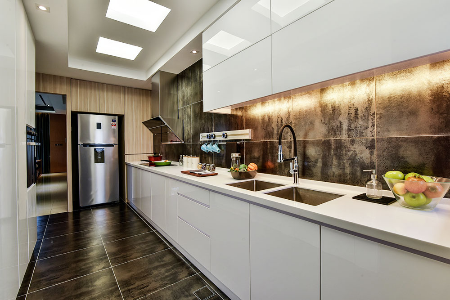
Counter Balance: How to Choose the Best Kitchen Countertop Surfaces
Friday, November 20, 2020
With all the various materials available for kitchen countertops, we figured you could do with some pointers on how to choose the most appropriate surface to suit your needs and your décor, so we gathered our team of experts and let them loose in our kitchens to help us put together what has turned out to be the internet's most definitive guide on materials for kitchen countertop surfaces.
Kitchen countertops can be formed out of completely natural or synthetic materials, or even some combination of both - all presenting different challenges. Your choice of material may be dependent on its colour and appearance, or what that selection says about your personality - but a forward-planning homeowner should also consider cost, availability, workability, durability, and maintenance needs before settling on a choice of a particular material.
 Designer: Craftsmen Valley
Designer: Craftsmen Valley
First of all, before settling on a particular material for surfaces that may become permanent fixtures in your kitchen, one should view and feel samples or mock-ups in person rather than depending on images to be accurately representative - as camera lenses, photo filters, and imaging algorithms sometimes do unpredictable things when reproducing real-life examples.
Laminates Since Formica® was popularized in Europe in the 1950s, laminates have made reappearances in the 1970s and in modern times to affect vintage interiors. Being a material largely composed of sheets of textile or fabric soaked in plastic resins, laminates are easily the most affordable material for kitchen surfaces. Various colours and textures are easily attained with the addition of pigments or thin sheets of natural materials into the compositions, meaning that the availability of laminates is likely the highest among all other materials. However, laminates will fade in direct sunlight and despite their highly synthetic composition, they do not stand up well to excessive moisture or corrosive chemicals such as some cleaning fluids. Although reputed to be susceptible to scratches and to scorching at high temperatures, laminates using modern formulations of resins have greatly increased their resistance to burns and scratches, as well as other forms of wear and tear in recent years.

Designer: IKEA
Wood The warming tones and grains of wood are ideal for creating a rustic or country atmosphere, working equally well when set within modern décors as accents. Wood is simple to work with, a fact that any high school student who has been subjected to woodworking classes can attest to. Wood is also highly workable, enabling curved surfaces that cannot be matched by the majority of engineered materials. Due to their natural origins and versatility in a wide range of interiors, wood is highly priced and limited in availability, meaning that finding large amounts of matching tones and grains may be a challenge. This much sought-after natural material requires a greater degree of care to maintain on account of its relative softness and porosity: wood is easily scratched, although the damage can be removed with sandpaper, but water is perhaps a wooden surface's worst enemy - requiring coats of varnish and regular doses of wood oil to seal gaps and prevent water from seeping in, which would result in the wood rotting from the inside and smelling of a wet forest.
 Designer: Casa Indah Design
Designer: Casa Indah Design
Concrete Countertops composed of cement and aggregate have been spotted making a resurgence in modern interiors ranging from minimalist to industrial. Relatively low in cost and high in availability, concrete surfaces can be customized in a wide variety of ways. Due to their initial liquid-like slurry state, concrete surfaces can be dyed with pigments, trowelled to form seamless curves, stamped with designs, pressed for marbled veins, or polished to a smooth finish. Concrete surfaces are highly resistant to scratches when fully set, but care should still be taken around this material as it can warp or even crack with extreme fluctuations in temperature, it also discolours with moisture and is susceptible to etching by mild acidic solutions. Due to their porosity when cured, concrete surfaces must be maintained with coats of sealer regularly applied every few months to prevent staining.
 Designer: Nevermore Design
Designer: Nevermore Design
Stone Natural stone such as granite, and softer stone such as marble, limestone, or soapstone have been popular in the last few decades, due in part to their timeless beauty and unique patterns. Natural stone has to be quarried from the handful of locations around the world known to be fortunate enough to have these beautiful materials thrust through the crust - as a result, the cost of acquisition is relatively high and dependant on the stone's origin and appearance, with availability being almost never guaranteed. Granite is the most durable, but like the rest of the popular stone materials, their natural porosity requires regular maintenance in the form of sealing coats.
 Designer: FIX Design Solutions
Designer: FIX Design Solutions
Solid Surface Typically composed of two-thirds mineral dust and one-third polymer resins, solid surfaces are perhaps the most versatile of all stone-based materials. Solid surfaces can be dyed with pigments and shaped into seamless curves in the same manner as concrete. Due to their composition being based on a by-product of quarrying activities, solid surface materials entail a reduced environmental impact, and they are relatively affordable in comparison to natural stone. Softer than granite, solid surfaces can be scratched - but the damage can be removed by sanding and polishing. Unlike natural stone, solid surfaces are non-porous and do not require sealing at the manufacturing level and little to no maintenance. Availability and installation may be an issue with this material, as the ownership of the high-technology facilities required to manufacture and install solid surface countertops are restricted to a few select entities.
 Designer: Havana Konzept
Designer: Havana Konzept
Quartz On the most durable end of the scale is quartz - often called engineered stone, which is composed of crushed stone that would otherwise have been discarded but is instead mixed with pigments and polymer resins to bind them together into the toughest possible material for your countertop. Quartz has been often touted as the material most resistant to scratches and heat, due to the high proportion of stone relative to synthetic materials in the composition of kitchen countertops. The dependence on unwanted stone rather than quarrying new materials makes quartz a more eco-friendly choice when compared against natural stone. The challenges with quartz are few, but considerable in importance: due to their manufacture being dependant on supplies of crushed stone, their cost is likely the highest among all other materials, availability in particular colours or styles may be limited, and by virtue of their hardness - quartz is the heaviest and most difficult material to install without professional assistance.
 Designer: Caesarstone
Designer: Caesarstone
Steel The preferred choice of serious chefs everywhere, steel stands up best to scratches and chemicals - especially when provided with a protective coating composed of polymers or carbon molecules. Various grades of steel are churned out from all corners of the globe, making this material one of the most available - but the heavy equipment and high level of expertise required to work steel into the forms necessary for kitchen countertops makes for relatively difficult and costly custom installations.
 Designer: Officine Gullo
Designer: Officine Gullo
Detailing and Finishes Once you have juggled all the various considerations that go into selecting the material for your kitchen countertop, its appearance, cost, availability, workability, durability, and maintenance needs - you cannot forgo putting some thought into the kind of detailing and finishes you want. Consider details such as bevels or curves to soften hard edges, and polishing the surface smooth for a reflective sheen, or dull for a matte finish to downplay the surface's prominence. You could even take things to the next level by mixing materials together: think a wood block framed in stone, for example.
Click here to see some more kitchens!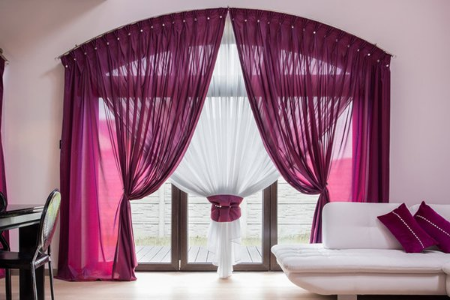
Curtain Luxury: How to Choose The Right Kind Of Curtains for a Luxurious Ambience
Friday, November 20, 2020
Nothing gives your living room a more sensual and luxurious look than high quality curtains. Functional yet decorative, the right kind of curtains can transform any room almost instantly. Here are some tips to keep in mind when choosing curtains to glam up your living rooms. Style and Colour Factor
Are you going for a classic look or a breezy one? Starting off with a key style helps to narrow down your curtain fabric choices which play an important role in creating the ambience you desire. It's a good idea to create a moodboard, pairing your chosen colour palettes with fabric samples. For ideas, you can browse through magazines or drop by a curtains showroom like Curtains Place to check out the window treatments on display.
Style and Colour Factor
Are you going for a classic look or a breezy one? Starting off with a key style helps to narrow down your curtain fabric choices which play an important role in creating the ambience you desire. It's a good idea to create a moodboard, pairing your chosen colour palettes with fabric samples. For ideas, you can browse through magazines or drop by a curtains showroom like Curtains Place to check out the window treatments on display.
 Image from Curtains Place
Fabric that Fits
Most rooms would benefit from cotton and linen, but if you want an opulent ambience, heavy fabrics like suede and velvet are the ideal choice. Think about the level privacy that you desire - for more private spaces, heavier fabrics are suitable. If you want to bring in light or have a hint of the views outside, opt for sheer curtains that are made from lightweight materials. Heavier fabrics offer a blackout effect, and create a more formal, sophisticated ambience, while lighter materials give off a casual and airy vibe. Most importantly, always go for high quality curtain fabrics so they are longer lasting and give you a more elegant look. For instance, Curtains Place provide a wide variety of both and light and heavy curtains that are made from a variety of eye-catching, quality fabrics.
Image from Curtains Place
Fabric that Fits
Most rooms would benefit from cotton and linen, but if you want an opulent ambience, heavy fabrics like suede and velvet are the ideal choice. Think about the level privacy that you desire - for more private spaces, heavier fabrics are suitable. If you want to bring in light or have a hint of the views outside, opt for sheer curtains that are made from lightweight materials. Heavier fabrics offer a blackout effect, and create a more formal, sophisticated ambience, while lighter materials give off a casual and airy vibe. Most importantly, always go for high quality curtain fabrics so they are longer lasting and give you a more elegant look. For instance, Curtains Place provide a wide variety of both and light and heavy curtains that are made from a variety of eye-catching, quality fabrics.
 Image from Curtains Place
Image from Curtains Place
 Image from Curtains Place
Curtain Types
There are many types of curtains out there to suit your space requirements. One of the popular ones are panels with rings from which ringed curtain panels hang from rings that are attached to the top of the fabric panel or inserted into the fabric near the top part. As the rod is exposed, it's important to use an attractive wooden or metal rods with beautiful finials at the end of the rod. Box and pinch pleats are also great choices for a more tailored and formal look.
Image from Curtains Place
Curtain Types
There are many types of curtains out there to suit your space requirements. One of the popular ones are panels with rings from which ringed curtain panels hang from rings that are attached to the top of the fabric panel or inserted into the fabric near the top part. As the rod is exposed, it's important to use an attractive wooden or metal rods with beautiful finials at the end of the rod. Box and pinch pleats are also great choices for a more tailored and formal look.
 Image from Curtains Place
Image from Curtains Place





